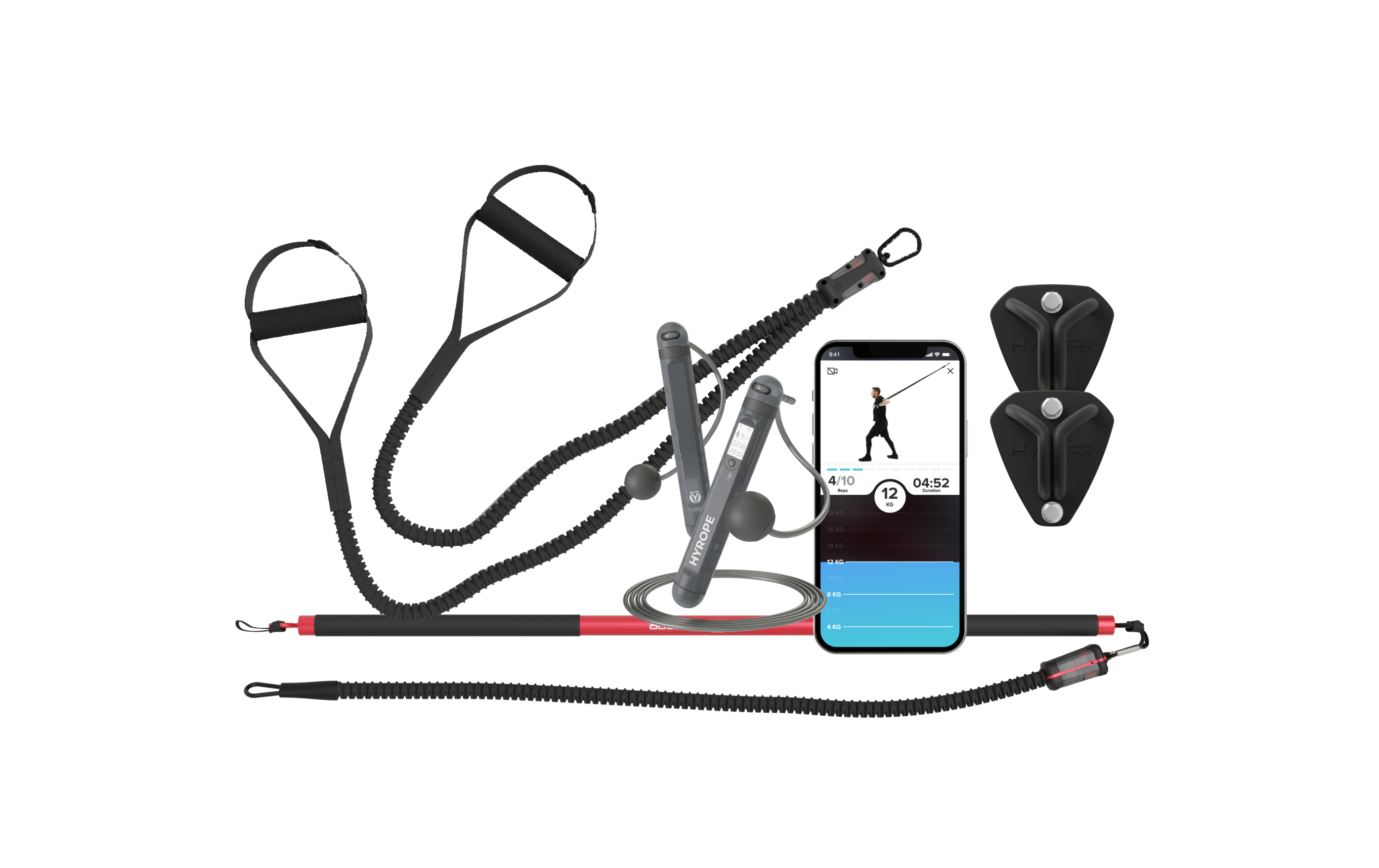In many different types of workouts, pushing your limits is often encouraged. It’s what motivates you to hold your plank for just 20 more seconds or to literally go that extra mile. And while pushing yourself to the edge can be a good thing, according to the pros -- it deserves no place in your stretching routine, which is why they never, ever recommended ballistic stretches.
Interested in learning more? Read on to discover everything you need to know about ballistic stretching.
So, What Exactly Is Ballistic Stretching?
You might not be too familiar with the term “ballistic stretching,” but there’s a pretty good chance you’ve tried this type of stretching at some point in your life.
Remember the butterfly stretch back from elementary school gym class? Basically, you’d sit on the ground with both of your feet together and knees opened outward before “flapping the butterfly wings” -- bouncing your knees up and down to really deepen the stretch. If you’ve ever done that, then you have done ballistic stretching!
Likewise, if you were ever told to reach down to your toes and then “bounce” your body up and down to try to get your hands as close as you can to your feet -- you’re familiar with the movement pattern.
Simply put, ballistic stretching happens when you first passively stretch out muscles around a joint, then rely on the momentum of other areas of your body to essentially "bounce" in and out of the stretch, forcefully trying to go further with each and every bounce.
Although this doesn’t sound like a terrible idea, most doctors, personal trainers, and anatomy experts highly discourage this type of stretching, preferring either static or dynamic stretching techniques instead to produce safe, effective results.
What Are The Dangers Of Ballistic Stretching?
The general consensus among stretch pros is to stay far, far away from ballistic stretches. Why? Because when you force a stretch to happen and the muscle tissue isn’t ready to stretch that far, it’s really easy for another area of your body to compensate, allowing for the stretch to take place. And pushing any muscle, tendon, or ligament too far increases the risk of strains, sprains, and tears, which ultimately means ballistic stretches can wind up doing a whole lot more harm than good.
You see, forcing a stretch too far can cause quite a bit of stress on your body, and if you are feeling this discomfort for a long duration of time, your sympathetic nervous system -- aka your fight or flight response -- takes over.
When this happens, the muscle belly -- which is the part of the muscle complex that actually stretches -- tightens up as a response to the pain. And when the muscles get tight, it pulls on the tendons, which don’t exactly have the same ability to stretch, so that can cause strain, and in more severe cases, inflammation and tears.
What’s more (as if that’s not enough to deter you from ballistic stretching) is that pushing your stretches too far and too hard with the ballistic method can actually tweak the muscles you're targeting, which defeats the entire purpose of stretching in the first place!
If you’re doing a runner’s stretch where you reach for your toes while adding in a few forceful bounces, you risk overusing your lower back, ultimately resulting in back strain or pain. Even though you are trying to stretch the hamstring muscle, forcing it like this can actually make it tighter and susceptible to injury.
What Should I Do Instead Of Ballistic Stretches?
Seeing as ballistic stretches should be struck from the record for good, try stacking your workout routine with dynamic and static stretching instead.
Dynamic Stretching
Of the three types of stretching (ballistic, dynamic, and static), dynamic tends to reign supreme. It involves taking a stretch to the end of its range of motion and then back to the starting position and repeating the movement over and over.
It allows for your muscles to get to end range while still giving them a chance to relax between reps. In response, your sympathetic nervous system doesn’t have much time to activate, and the repetitive movement allows for a much deeper stretch with each pass of the stretch.
In other words, it lets you get a whole lot deeper in your pursuit of loosening those muscles without the risk of injury-- which is why many people prefer dynamic stretching over ballistic.
Some examples of dynamic stretching includes:
- Jumping jacks
- Walking knee hugs
- Arm circles
- Side shuffles
- Leg swings
- Shoulder rotations
Dynamic stretching is best done right before a workout to help warm up your entire body, from head to toe, before vigorous exercise.
Static Stretching
Static stretching, on the other hand, is best done at the end of your workout when your muscles are warm and involves stretches that you hold in place for a period of time -- without movement. This allows your muscles to really loosen up while increasing flexibility and range of motion.
Since static stretching requires you to hold a stretch for a long period of time, you will want to make sure that whatever stretch you’re doing doesn’t produce the same stress response in your body that ballistic stretching does. To do that, really focus on finding opposition and length as you’re holding your stretch, and whatever you do, avoid sinking into your joints.
Static stretching is a great opportunity to use a resistance training system like GEAR 1 that can help you get deeper into poses to really get the most out of your stretch.
Some examples of static stretching includes:
- Child’s pose
- Biceps stretch
- Knees to chest
- Shoulder stretch
- Side bends
- Overhead triceps stretch
A Final Word
At the end of the day, more research is needed to determine the benefits of ballistic stretching -- and if they’re worth the drawbacks. In the meantime, we’d say it’s pretty safe to skip ballistic stretching in your standard workout routine. Let the pros continue to do their research, and you can leave your “flapping butterfly wings” out of your workout.
If you’re looking for a way to really stretch your muscles, try doing dynamic or static stretches with GEAR 1 from HYGEAR -- a smart gym system designed specifically for your home. It comes with two high-performance bands with adjusters, two ergonomic handles, two sets of ankle straps and wristbands with smart sensors, a door anchor, and a carrying guide -- everything you need to get your best stretch yet!
Bands like these are an excellent tool to stretch with because you can do a number of different stretches with them -- both dynamic and static. You can decide your own tension and decide when to stop the stretch. Simply put, resistance training and stretching put you in total control of the movement.
Whether you’re looking to stretch your body before you begin exercising or get in a killer full-body workout before heading to the office, HYGEAR can help.
Sources:
Warm Up, Cool Down and Be Flexible - OrthoInfo | AAOS
How to Do the Butterfly Stretch | dummies
CURRENT CONCEPTS IN MUSCLE STRETCHING FOR EXERCISE AND REHABILITATION | NIH
Fight or Flight: The Sympathetic Nervous System | Live Science








השארת תגובה
This site is protected by hCaptcha and the hCaptcha Privacy Policy and Terms of Service apply.